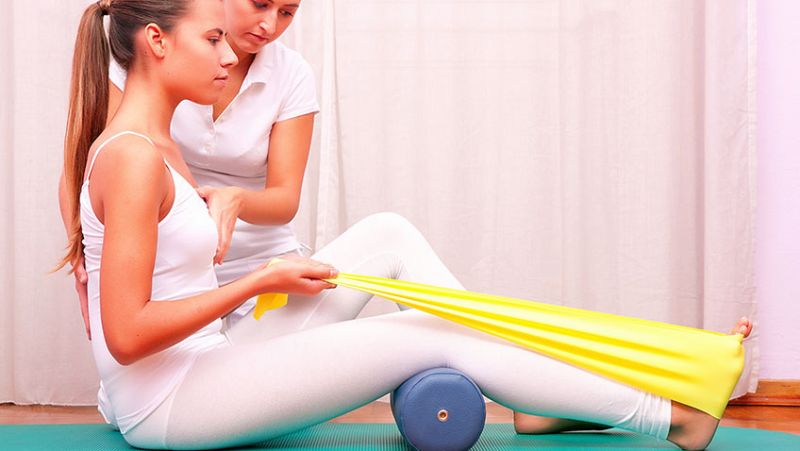
Frozen shoulder, medically known as adhesive capsulitis, is a painful and often frustrating condition that affects theshoulder joint. Characterised by stiffness, pain, and reduced range of motion, frozen shoulder can significantly limit a person's ability to perform everyday tasks, whether it's lifting tools, painting walls, or simply reaching into a cupboard. One effective and widely-recognised method of treating this condition is the 7-stage Shoulder Mobilization Technique, commonly referred to as Spencer's Technique.
Originally developed as an osteopathic manipulative technique, Spencer's Technique offers a structured and manageable approach to restoring shoulder function. In this article, we'll walk through each of the seven stages of the technique and discuss how it can help relieve symptoms and improve mobility. Whether you're a DIY enthusiast managing pain at home or a tradesperson concerned about shoulder health, understanding this technique can be a game-changer.
Understanding Frozen Shoulder
Frozen shoulder typically develops in three stages: the freezing stage, the frozen stage, and the thawing stage. Each lasts several months and presents a distinctive set of challenges. In the freezing stage, pain gradually increases and mobility becomes restricted. The frozen stage involves less pain but more stiffness, while the thawing stage sees a gradual return of motion.
Common in people aged 40 to 60, especially women, the condition may result from trauma, overuse, or periods of immobility. DIY home improvement professionals and tradespeople may spot early warning signs such as sharp pain when reaching overhead or rotating the arm, motions common in roofing, painting, or installation work.
Traditional treatments like pain relief medications, physiotherapy, and corticosteroid injections help but often provide limited relief. Spencer's Technique, however, offers a manipulation-based treatment that can be performed by healthcare professionals and guided for use in limited circumstances at home with professional instruction.
What Is Spencer's Technique?
Spencer's Technique is a series of mobilization movements performed sequentially to help restore range of motion in the shoulder. Considered part of Osteopathic Manual Medicine (OMM), Spencer's Technique addresses shoulder restriction by passively mobilizing the joint capsule in multiple planes of motion.
The technique is most effective when applied by a skilled therapist. However, under supervision or through detailed instruction, parts of the method can be adapted for at-home exercises. This makes it an appealing option for those unable to attend regular therapy sessions, like busy professionals or independent tradespeople across the UK who need flexible solutions.
Below, we detail each of the seven stages of Spencer's Technique, explaining what they involve and their benefits.
The 7 Stages of Shoulder Mobilization (Spencer's Technique)
1. Extension with Elbow Flexed
This stage begins with the patient lying on their side while the therapist supports the elbow, gradually moving the arm backward into extension. This motion targets the posterior capsule of the shoulder.
As many DIYers and tradespeople frequently work with arms outstretched or behind them, think wiring an electrical box or sanding a floor, this phase helps restore essential backward arm reach without pain.
2. Flexion with Elbow Straight
With the elbow extended, the therapist gently lifts the arm upward toward the ear. This stretches the anterior structure of the shoulder, encouraging greater forward flexibility.
This movement mimics tasks like lifting overhead storage, changing light bulbs or placing items onto high shelves, daily activities that can cause discomfort if frozen shoulder is left untreated.
3. Circumduction with Compression
This involves circular movement of the shoulder joint while applying gentle pressure into the joint, aiding in lubrication and synovial fluid distribution within the capsule.
The motion not only softens adhesions but also prepares the joint for more advanced movement. Compressional forces increase the pliability of soft connective tissue surrounding the joint, ideal for early-stage treatment.
4. Circumduction with Traction
In this phase, the circular motion is maintained but with gentle pulling (traction) on the joint, rather than compression. This traction helps stretch the capsule and ease tension in the ligaments and muscles.
It can be particularly relieving for individuals with a locked joint who feel a tight or grinding sensation. For professionals working with their hands above shoulder height regularly, this step helps release built-up strain.
5. Abduction and External Rotation
The arm is lifted sideways (abduction) while being rotated outward. This movement is closely linked to everyday activities like combing hair or placing objects on high shelves.
By restoring mobility through this range, individuals regain independence in repetitive functional tasks, crucial for decorators, plasterers, and construction workers alike.
6. Adduction and Internal Rotation
This step involves bringing the arm across the body and rotating it inward. Stretching the posterior and inferior capsular structures, it promotes better balance between front and rear shoulder flexibility.
Tasks such as reaching into a back pocket or accessing tools in a back pouch require this motion. Improved internal rotation can make a huge difference for skilled tradesmen needing fluid mobility all day long.
7. Shoulder Pump (Lymphatic Drainage Technique)
The final phase of Spencer's Technique involves a gentle pumping or compression movement towards the shoulder joint to encourage lymphatic flow and reduce inflammation.
Reducing edema (swelling) around the joint supports faster healing and is highly beneficial for those returning from an injury. It also encourages complete flushing of joint toxins, helping maintain longer-term health of the area.
Benefits of Spencer's Technique
Spencer's Technique stands out in the world of shoulder rehabilitation due to its comprehensive targeting of all major ranges of motion. It's repetitive nature also integrates muscle memory and improves neuromuscular control. Here are some of the documented benefits:
- Improved shoulder mobility and flexibility
- Enhanced circulation and lymphatic drainage
- Decreased energy loss from compensating body movements
- Faster recovery from shoulder stiffness or injury
- Reduced reliance on medications or surgical intervention
With UK professionals increasingly seeking non-invasive treatments for musculoskeletal pain, the rise in use of Spencer's Technique across physiotherapy clinics is reflective of its proven effectiveness.
Can I Practice This Technique at Home?
While parts of Spencer's Technique can be performed independently or with assistance from a partner, it's advised to receive initial guidance from a certified osteopath or physiotherapist. Professionals can assess the severity of the condition and demonstrate proper technique, limiting the risk of improper movement causing further harm.
For those unable to visit clinics regularly, such as rural tradesmen, repainting crews tackling large builds, or architects desk-bound for long project hours, having home-adapted versions of this technique can be incredibly empowering.
When to Seek Medical Help
Although this technique is powerful, shoulder pain or stiffness that persists for longer than a few weeks should always be assessed by a healthcare provider. Early diagnosis and intervention remain key to preventing long-term restriction or disability.
If you've recently suffered an injury or notice shoulder pain interfering with your work or hobbies, consider scheduling a consultation with a physiotherapist trained in manual therapy. For UK residents, the NHS offers referral pathways, and many private clinics offer assessments without long waitlists.
Conclusion
Frozen shoulder doesn't have to mean the end of your productivity, whether you're redecorating your home on weekends or handling daily tasks as a site tradesperson. Spencer's Technique provides a structured and effective roadmap to regain shoulder mobility without surgery or invasive procedures.
By following the 7 stages detailed above under proper guidance, patients can experience pain relief, improved motion, and restored function in the shoulder joint. It empowers individuals with a proactive solution, restoring confidence not just in their movement, but also in their lifestyle.
If you're someone in the UK battling shoulder stiffness or looking for non-invasive options to improve mobility, Spencer's Technique might just be the mobilisation method you've been waiting for.


